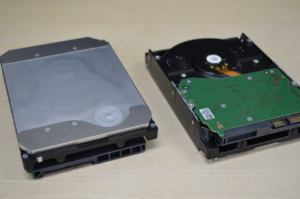[Tech Blog] EfficientAD Overview
EfficientAD Overview Article
TLDR:
Title, Authors, and Publication Year
- Title: EfficientAD: Accurate Visual Anomaly Detection at Millisecond-Level Latencies
- Authors: Kilian Batzner, Lars Heckler, Rebecca König
- Publication Year: 2024
- Link: https://arxiv.org/abs/2303.14535
What is it about?
This paper introduces "EfficientAD," a method designed to perform visual anomaly detection in real-time computer vision applications efficiently and accurately. This approach processes images in under a millisecond on modern GPUs, utilizing a student-teacher model to detect anomalous features. Additionally, the paper introduces a novel loss function that enhances the accuracy of anomaly detection and localization while significantly reducing computational costs.
What makes it different from previous research?
Compared to existing anomaly detection methods, EfficientAD sets a new benchmark in both detection performance and anomaly localization while achieving exceptionally low latency (under 2 milliseconds) and high throughput (over 600 images per second). Unlike traditional methods, which often sacrifice computational efficiency to achieve high performance, EfficientAD successfully balances both.
What are the key technologies and methods?
EfficientAD's main technical features include:
- Lightweight Feature Extraction Network: This network is composed of significantly fewer layers than conventional deep neural networks, enabling rapid extraction of image features.
- Student-Teacher Model: The student network mimics the teacher network's features to detect anomalies. The introduction of a new loss function prevents overgeneralization to non-normal data, enhancing anomaly detection performance.
- Logical Anomaly Detection: An autoencoder is incorporated to detect anomalies that violate logical constraints such as position or size.
How was its effectiveness validated?
EfficientAD was evaluated using three industrial anomaly detection datasets: MVTec AD, VisA, and MVTec LOCO. These evaluations demonstrated that EfficientAD achieved state-of-the-art performance in both anomaly detection and anomaly localization.
Discussion
While the paper highlights EfficientAD's high performance and low computational cost, it acknowledges challenges in detecting finer logical anomalies, such as errors within a few millimeters. The authors suggest that traditional measurement techniques may still be necessary for such cases.
Suggested Further Reading
To deepen your understanding of the technologies underlying EfficientAD and related research fields, the following studies are recommended:
- Asymmetric Student-Teacher Networks for Industrial Anomaly Detection - Rudolph et al. (2023)
- PatchCore: Towards Total Recall in Industrial Anomaly Detection - Roth et al. (2022)
1. Introduction
Anomaly detection plays a crucial role, particularly in real-time computer vision applications. For example, in manufacturing, detecting and removing defective products quickly ensures quality and enhances production efficiency. However, traditional anomaly detection methods often involve high computational costs and are unsuitable for real-time processing. EfficientAD addresses this issue as an innovative solution that combines real-time processing with high-precision anomaly detection.
EfficientAD analyzes images and detects anomalies in less than a millisecond. This achieves extremely low latency and high throughput compared to conventional methods. This article provides a detailed explanation of the technical features of EfficientAD and a performance evaluation based on experimental results.
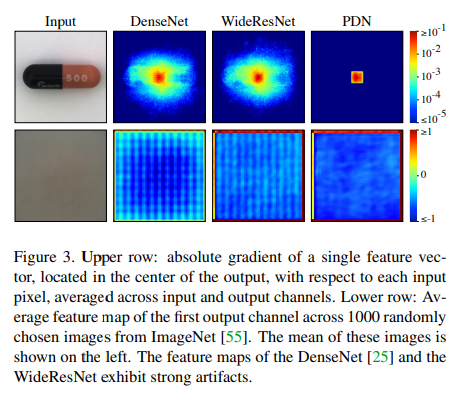
Figure 1: Anomaly Detection Performance vs. Latency
This figure compares the performance (AU-ROC) and latency of EfficientAD with other anomaly detection methods. It visually illustrates how EfficientAD maintains high accuracy while achieving significantly lower latency compared to other methods. This figure helps emphasize both the efficiency and precision of EfficientAD.
2. What is EfficientAD?
EfficientAD is an innovative approach designed to maintain high accuracy in visual anomaly detection while enabling real-time processing. This technology is particularly crucial in industrial anomaly detection applications where performance is paramount. It is expected to be used in scenarios requiring the early detection of anomalies, such as product inspection on production lines, quality control, and machinery fault prediction.
EfficientAD has the following key features:
-
Real-time Processing: EfficientAD can process images in under a millisecond on modern GPUs, achieving a throughput of over 600 images per second. This allows real-time anomaly detection, significantly improving efficiency compared to traditional methods.
-
High-Precision Anomaly Detection: EfficientAD outperforms traditional methods in detecting anomalies and precisely locating them. By utilizing a student-teacher model, it accurately distinguishes between normal and anomalous images and pinpoints the location of anomalies.
-
Reduced Computational Cost: By introducing a new loss function, EfficientAD significantly reduces computational costs while improving anomaly detection accuracy. This is one of the key reasons EfficientAD is more efficient compared to traditional methods.
These features enable EfficientAD to provide an optimal solution for real-time vision applications while maintaining a balance between anomaly detection performance and computational efficiency. Traditional anomaly detection methods often require substantial computational resources to enhance performance, which in turn compromises real-time processing. However, EfficientAD effectively avoids this trade-off, achieving both.
3. Technical Features of EfficientAD
EfficientAD excels over conventional anomaly detection methods due to several innovative technologies incorporated into its design. This section provides a detailed explanation of the main technical features of EfficientAD.
3.1 Lightweight Feature Extraction Network
At the core of EfficientAD is the Lightweight Feature Extraction Network. Unlike traditional deep learning methods, which typically use large neural networks with many layers, resulting in increased computational costs and difficulties with real-time processing, EfficientAD significantly reduces the number of layers.
EfficientAD uses a network composed of just four convolutional layers. This network takes a 33×33 pixel patch as input and rapidly processes it to extract feature vectors. This lightweight structure significantly reduces processing time, enabling feature extraction in under a millisecond.
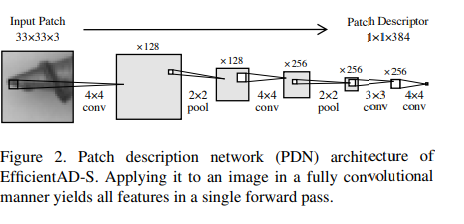
Figure 2: Patch Description Network (PDN) Architecture
Explanation: This figure illustrates the architecture of the Patch Description Network (PDN) in EfficientAD. The PDN plays a central role in feature extraction within EfficientAD and is characterized by its lightweight and fast network design. The figure shows the convolutional and pooling layers used to transform 33×33 pixel patches into feature vectors. The network is composed of just four convolutional layers, each extracting features at different resolutions.

Figure 3: Gradient and Feature Map Analysis
Explanation: This figure compares EfficientAD's Patch Description Network (PDN) with other common feature extraction networks (DenseNet and WideResNet). The top section visualizes the gradients of input pixels relative to the feature vectors for each network, while the bottom section displays the feature maps.
-
Top Section (Gradient Map): This shows how much each input pixel influences a single feature vector. While the gradient maps of DenseNet and WideResNet show that their feature vectors depend on distant pixels, EfficientAD’s PDN is limited to more localized regions. This allows anomalies to be isolated without affecting other parts of the image, improving anomaly localization.
-
Bottom Section (Feature Map): This section compares the feature maps generated by each network. DenseNet and WideResNet exhibit artifacts in their feature maps, while the PDN generates clean, artifact-free feature maps. This leads to more accurate anomaly detection with EfficientAD.
3.2 Student-Teacher Model
At the heart of EfficientAD's anomaly detection is the Student-Teacher Model approach. The teacher network (a pre-trained model) learns features of normal images, and the student network is trained to mimic the teacher network's output.
The key to anomaly detection lies in the student network's inability to perfectly reproduce the teacher's output for anomalous images. This failure is used as a signal to detect anomalies. Specifically, EfficientAD introduces a new loss function that constrains the student network's learning, preventing it from overgeneralizing to non-normal data. This approach enhances anomaly detection accuracy while keeping computational load in check.
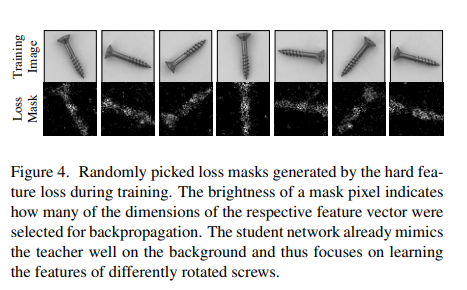
Figure 4: Hard Feature Loss Visualization
Explanation: This figure visualizes the impact of the "Hard Feature Loss" in EfficientAD. Hard Feature Loss is a new loss function introduced by EfficientAD to improve accuracy in anomaly detection. It encourages the student network to focus on critical areas when mimicking the teacher network.
-
Lower Mask: This mask shows the loss generated during training, where the bright areas indicate where the student network struggles to mimic the teacher network. This mask uses only the dimensions with the highest loss for backpropagation, preventing the student network from overfitting to anomalies.
-
Upper Image: This image shows a training image with the loss mask applied, demonstrating that while the background has been successfully mimicked, the network focuses on learning the features of a screw rotated in a different direction.
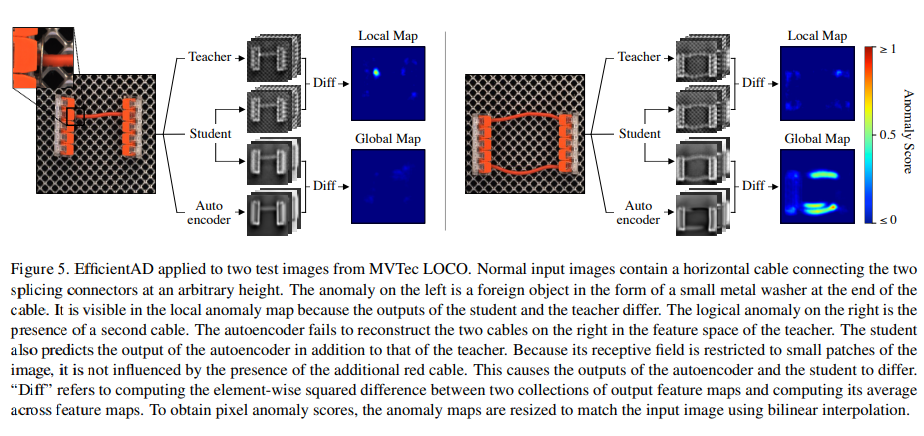
Figure 5: Anomaly Detection Example on MVTec LOCO
Explanation: This figure illustrates the anomaly detection process in EfficientAD when applied to test images from the MVTec LOCO dataset. The left image shows structural anomalies, while the right image shows logical anomalies.
-
Left Anomaly Map (Structural Anomaly): In this image, a small metal washer at the end of a cable is detected as an anomaly in EfficientAD. This detection is based on the difference between the outputs of the student and teacher networks, emphasizing structural anomalies.
-
Right Anomaly Map (Logical Anomaly): This image detects an additional red cable as an anomaly. The anomaly is detected due to the failure of the autoencoder's reconstruction. EfficientAD uses the difference between the student network's output and the autoencoder's output to detect logical anomalies.
3.3 Logical Anomaly Detection
In industrial applications like manufacturing, not only physical defects but also logical anomalies (e.g., misplacement of parts or the presence of surplus parts) are crucial detection targets. EfficientAD efficiently detects such anomalies using an autoencoder.
The autoencoder learns logical constraints from normal image data and detects anomalies that violate these constraints during testing. Specifically, when an image is encoded and then decoded, if anomalies are present, the reconstruction fails, and the anomaly is detected. In EfficientAD, this autoencoder is integrated with the student-teacher model, enabling the detection of logical anomalies with high accuracy.
4. Reasons for Efficiency
EfficientAD is highly efficient in anomaly detection due to its design and technology. Here, we explain the factors that contribute to its efficiency.
4.1 High-Speed Processing on GPUs
The most notable feature of EfficientAD is its ability to perform high-speed processing on GPUs. Traditional anomaly detection methods typically use large neural networks to improve accuracy, increasing computational costs and making real-time processing challenging.
EfficientAD combines a lightweight feature extraction network with an efficient student-teacher model, allowing it to process images and detect anomalies in under a millisecond. This is achieved on modern GPUs like the NVIDIA RTX A6000, which can process over 600 images per second. This high throughput makes EfficientAD highly suitable for industrial applications where real-time processing is essential.
4.2 Real-World Applications and Results
EfficientAD's efficiency is evident in real-world industrial applications. For example, in manufacturing, EfficientAD has been implemented to detect surface defects on metal products in real-time, allowing for immediate removal of defective items from the production line. This has improved production efficiency and reduced costs.
In agriculture, EfficientAD has been used to prevent the failure of machinery by detecting foreign objects in harvesting equipment. This has increased uptime and overall productivity. EfficientAD's efficiency and high accuracy have made it a practical solution across various industries.
What sets EfficientAD apart from other methods is not just the conservation of computational resources but also the fact that it achieves this without sacrificing the accuracy of anomaly detection. This allows for rapid and accurate anomaly detection in real-world applications, enabling high-throughput processing that was difficult to achieve with traditional methods.
5. Experiments and Results
EfficientAD's performance has been thoroughly evaluated using multiple industrial anomaly detection datasets. Specifically, it was tested on three major datasets: MVTec AD, VisA, and MVTec LOCO. This section details the experimental results of EfficientAD on these datasets.
5.1 Datasets Used
-
MVTec AD: This dataset includes inspection scenarios for 15 types of industrial products, each containing normal and anomalous images. It reflects the challenges of anomaly detection in real-world industrial environments and serves as a standard benchmark for evaluating EfficientAD's performance.
-
VisA: The VisA dataset includes 12 different anomaly detection scenarios, with more challenging anomalies than those in MVTec AD. EfficientAD demonstrated high performance on this dataset, particularly excelling in anomaly localization.
-
MVTec LOCO: MVTec LOCO includes both structural anomalies and logical anomalies (e.g., misplacement or incorrect sequencing of objects), making it a more challenging dataset. EfficientAD also performed well on this dataset, showcasing its strong detection capabilities for both types of anomalies.
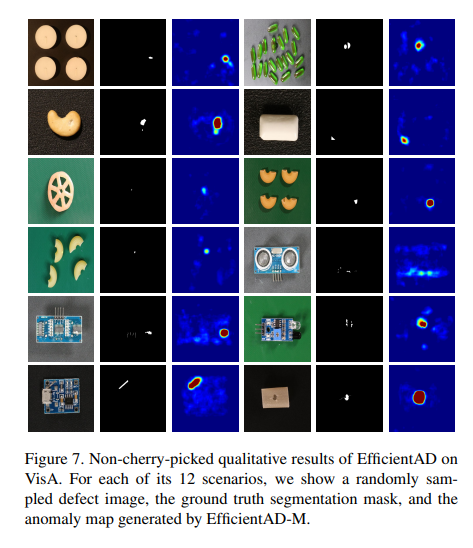
Figure 7: Qualitative Results on VisA Dataset
Explanation: This figure shows EfficientAD's anomaly detection results for 12 scenarios in the VisA dataset. Anomalous images randomly selected from each scenario are displayed alongside their corresponding anomaly maps. The left column shows the original anomaly images, the center column shows the ground truth segmentation masks indicating the actual anomaly locations, and the right column shows the anomaly maps generated by EfficientAD.
-
Anomalous Images: These are the test images containing anomalies in each scenario. These anomalies represent product defects or issues specific to each image.
-
Ground Truth Masks: The center column shows the exact locations of anomalies in each image, serving as the reference data for evaluating EfficientAD's detection performance.
-
EfficientAD's Anomaly Maps: The right column shows the anomaly maps detected by EfficientAD. These maps illustrate how EfficientAD detects and visualizes anomalies, with a visual comparison to the ground truth, allowing verification of EfficientAD's detection accuracy.
5.2 Anomaly Detection and Localization Performance
EfficientAD achieved state-of-the-art results in both anomaly detection and localization across the datasets mentioned. Specifically, the following results were reported:
-
Anomaly Detection Accuracy (AU-ROC): EfficientAD achieved an average AU-ROC of 95.4% across the MVTec AD, VisA, and MVTec LOCO datasets. This is significantly higher than other recent anomaly detection methods.
-
Anomaly Localization Accuracy (AU-PRO): For anomaly localization, EfficientAD recorded an average AU-PRO of 92.5%, indicating very high accuracy. EfficientAD's detection accuracy for logical anomalies, particularly on the MVTec LOCO dataset, was highly rated.
These results demonstrate that EfficientAD consistently delivers high performance across various anomaly detection tasks. Unlike traditional methods, which often see an increase in computational cost to enhance detection accuracy, EfficientAD avoids this trade-off, achieving low latency and high throughput.
5.3 Comparison with Other Methods
EfficientAD has a clear advantage over other recent anomaly detection methods. The following table compares EfficientAD with other methods in terms of anomaly detection accuracy, anomaly localization accuracy, latency, and throughput.
| Method | Detection Accuracy (AU-ROC) | Localization Accuracy (AU-PRO) | Latency (ms) | Throughput (images/second) |
|---|---|---|---|---|
| EfficientAD-S | 95.4% | 92.5% | 2.2 | 614 |
| EfficientAD-M | 96.0% | 93.3% | 4.5 | 269 |
| FastFlow | 90.0% | 86.5% | 17 | 120 |
| PatchCore | 91.1% | 80.9% | 32 | 76 |
| AST | 92.4% | 77.2% | 53 | 41 |
As shown in the table, EfficientAD outperforms other methods in all aspects, including detection accuracy, localization accuracy, latency, and throughput. Notably, EfficientAD's latency is significantly lower than that of other methods, demonstrating unmatched efficiency in real-time processing.
6. Challenges and Future Directions
While EfficientAD exhibits exceptional performance in anomaly detection, it also faces some challenges. Additionally, there are several areas where improvements are anticipated in future research and development. This section discusses the current limitations of EfficientAD and future prospects.
6.1 Limitations of EfficientAD
EfficientAD demonstrates high accuracy in detecting structural and logical anomalies, but it has limitations in detecting extremely fine anomalies and those requiring physical measurements.
-
Fine Logical Anomalies: EfficientAD, using a combination of an autoencoder and a student-teacher model, can detect logical anomalies. However, in cases involving fine details such as millimeter-scale errors or very small dimensional differences, the current EfficientAD may struggle to maintain sufficient accuracy. In such cases, traditional measurement techniques may need to be supplemented.
-
Dependency on Training Data: EfficientAD is trained based on normal image data, so if the training data is insufficient, the accuracy of anomaly detection may be affected. Especially in scenarios involving unknown anomaly types or a wide variety of anomalies, it may be challenging to cover all potential anomalies using only training data.
6.2 Future Research Directions
For EfficientAD to continue evolving, the following areas of research and development are anticipated:
-
Improving Fine Anomaly Detection: To address the challenge of detecting fine logical anomalies, which are difficult for the current EfficientAD, higher-precision detection methods are required. For example, introducing higher-resolution feature extraction or additional auxiliary modules may help overcome this challenge.
-
Expanding Anomaly Types: To further expand the types of anomalies EfficientAD can handle, developing training methods using synthetic data or automatically generating anomalies is crucial. This would maintain the model's generalization and accuracy even in scenarios where actual data is scarce.
-
Expanding Application Scenarios in the Real World: To apply EfficientAD's technology to a broader range of fields, it is essential to verify and implement it in non-industrial areas, such as medical image anomaly detection and security camera surveillance.
Research in these directions is expected to further advance EfficientAD's technology and improve the accuracy and efficiency of anomaly detection across various application domains.
7. Conclusion
EfficientAD has garnered significant attention as an innovative method that combines real-time capability with high precision in the field of anomaly detection. Traditional anomaly detection methods often face the challenge of increased computational costs to improve accuracy, making real-time processing difficult. However, EfficientAD elegantly addresses this challenge by combining a lightweight feature extraction network with a new loss function.
EfficientAD has been evaluated across multiple industrial anomaly detection datasets, such as MVTec AD, VisA, and MVTec LOCO, where it achieved state-of-the-art performance in both anomaly detection accuracy and anomaly localization. Compared to existing methods, EfficientAD offers a significant improvement in computational efficiency, processing over 600 images per second with latencies under 2 milliseconds.
However, EfficientAD does have some limitations, such as difficulties in detecting extremely fine logical anomalies or those requiring physical measurements. Future research is expected to focus on addressing these challenges, improving fine anomaly detection, expanding the types of anomalies the system can handle, and broadening its application to other fields, such as medical imaging and security surveillance.
EfficientAD represents a potential new standard in anomaly detection technology, offering significant advantages in real-time processing across various fields. As research and implementation continue, this method is likely to serve as a critical foundation for future advancements in the field.


